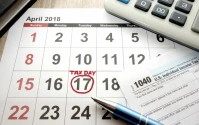Aster's Airdrop Debacle: A Case Study in Crypto Hype vs. Reality
Aster's recent price drop, plummeting over 20% after its Stage 2 airdrop, from over $2.00 to $1.55, isn't just another crypto blip. It's a flashing warning sign about the sustainability of hype-driven tokenomics. The initial allure of massive user acquisition (Dune Analytics reported 20,195 new users in 24 hours, boosting total users to 3.24 million) masked underlying issues that are now bubbling to the surface.
The first red flag? DeFiLlama's removal of Aster's perpetuals volume data on October 6. The stated reason – near-perfect correlations with Binance perpetuals – raises serious questions about the authenticity of Aster's trading volume. Were these organic trades, or something… else? On-chain analysts had previously flagged similar concerns, noting unnatural correlations with Ethereum and other trading pairs, leading to temporary delistings from some volume aggregators. It smells like wash trading, plain and simple.
Then came the airdrop itself. Users, expecting rewards commensurate with their activity, were met with allocations that seemed… arbitrary. Claims of $2 million in perpetuals volume yielding only $100 in ASTER allocations are rampant. This wasn't just disappointment; it fueled accusations of unfair allocation, insider manipulation, and bot-operated wallets scooping up the lion's share. Aster acknowledged data inconsistencies and delayed the airdrop by 48 hours, offering a USDT refund option. But that's like offering a band-aid after a shark bite. Aster Price Prediction Plunges as Airdrop Controversy Erupts - ICOBench.com

Is Aster a Buy, a Sell, or Just a Warning?
Let's look at the numbers. Aster boasts a $1.43 billion TVL and $254 million in all-time income. Those are impressive figures. But context is everything. The current price is $1.05, and the 1-month price prediction is a bleak $0.9071 (a nearly 25% drop). The 14-day RSI of 34.71 is nearing oversold territory, and volatility is extremely high at 26.52%. Technical indicators paint a mixed picture: SMA 5 suggests a "Buy" at $0.9483, while EMA 5 screams "Sell" at $1.42. (A discrepancy I find… telling, honestly.)
Long-term predictions offer a glimmer of hope, projecting a slow climb to $1.10 in 2026 and $2.18 in 2040 (based on a 5% annual growth model). But those projections are based on assumptions of consistent growth. And as we've seen, consistency is not a word I'd associate with Aster right now. The Fear & Greed Index sits at 37 (Fear), reflecting the current market sentiment. And this is the part of the report that I find genuinely puzzling. Why are people still holding on, given all the red flags? Are they blinded by hope, or is there something I'm missing?
One possible explanation lies in the broader crypto landscape. Projects like Bitcoin Hyper, which has raised over $25 million, offer predefined pricing tiers and transparent reward mechanics. This appeals to users disillusioned by the "mystery reward" models that have become so prevalent (and, frankly, prone to manipulation). Are users starting to demand more transparency and less hype? Is this the beginning of a shift towards more sustainable tokenomics? It's hard to say for sure, but the backlash against Aster suggests that patience is wearing thin.









